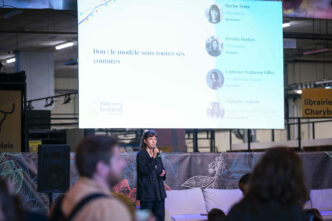

There was a time when, on Facebook as on Instagram, a motivated Social Media Manager and a well developed communications strategy were enough to get a brand off the ground. Sézane, Bergamotte, Tediber, Horace, Shanty Biscuits… The 2010s marked the advent of Digital Native Vertical Brands (DNVB). Lifestyle brands that built their success on an impeccable mastery of digital channels.
Today, however, the tide is turning. Instagram is being criticized for its impact on mental health. There’s one bad buzz after another across the platforms (Amazon Prime in 2023, Balenciaga in 2022, etc.). And young internet users are demanding ever more authenticity and transparency from the brands they consume…
These trends are not insignificant. They reveal a profound transformation in the dynamics of social media communication, and in what consumers expect from brands. In response to these changes, a new profession is emerging. The Community Builder, tasked with connecting and developing trust with a company’s ever-changing audience.
Is social media the no-man’s-land of communication?
The golden age of social media platforms as amplifiers of visibility and pedestals for companies to develop seems to be behind us.
At a time when accusations of greenwashing are pouring in (Air France here, BNP Paribas there…), most brands feel they’re walking on eggshells when it comes to speaking to their audiences and consumers.
What’s more, it’s becoming increasingly difficult to stand out on social platforms.
- Content saturation. On Instagram, 95 million photos and videos are posted every day
- The decline in organic engagement, influenced in part by algorithms that favour certain, very specific types of content
- The monetization challenges faced by social media platforms mean that they deliberately limit the organic visibility of corporate accounts in order to prioritize their own paid-for offers
As a result, engagement rates are down across all sectors, and online brands are faced with very passive audiences.
But it takes a lot more than that to discourage some pioneering companies. Those who have responded by completely rethinking their marketing strategy, integrating a community component into it.
From passive audience to engaged community
In response to the transformation of social networks, a new marketing strategy has been emerging over the last few years. One that involves moving from audience to community, something that not only supports the brand as it grows, but directly impacts its growth.
This is what the cosmetics brand Nidé.co has done, for example, by asking members of its community to suggest ideas for new products. If the idea receives more than 2,000 votes in the community, it goes into production and is marketed. Profits from sales are then shared with the co-creator.
The company specialises in clean cosmetics, a growing trend in makeup and skincare. But instead of creating products that it feels fit the most people the best (or looking at it another way, with the least compromises), Nide looks for niches by asking its consumer base what they really want from their products.
‘Have you ever said, when speaking to your friends, “If only this thing existed”?’ Nide’s website asks. Nide wants you, the consumer, to share those wild wishes with it so that you can “Co-create Tomorrow”.
You’re probably wondering how, in practical terms, it’s possible to achieve such a feat. That’s what the role of the Community Builder is all about. As the true representative of the brand, lending its voice and face to humanize it, the Community Builder is a guarantor of the community’s commitment.
The community approach seeks to go further than Social Media Management. As well as relaying the brand’s messages, Community Building consists of creating a space dedicated to exchanges between members of the community, opening up a dialogue between the brand and them. And of course, to encourage this dialogue, the Community Builder is essential.
From Social Media Manager to Community Builder: focus on a new profession
Working at the crossroads between strategy, human resources, management and communication, the Community Builder is a highly versatile profile. Whereas Social Media Managers (or Community Managers) are generally responsible “solely” for feeding content into the brand’s social networks, the Community Builder’s role covers a wider range of responsibilities:
- Defining community strategy and the related business KPIs (conversion, retention, loyalty, brand visibility, etc)
- Creating and animating a community space that brings members together, achieved through speaking out, creating content, organizing events, etc
- Implementing growth strategies for the community. For example by creating an ambassador program or deploying a strategy for acquiring new members on social
- Liaise with internal teams who can benefit from the community’s feedback or actions: marketing, product, customer support, sales, etc.
Although still in its infancy, the job is already highly sought-after. In May 2023, on LinkedIn, there were almost 28,500 job offers containing the keyword “community”.
A trend that’s not going to slow any time soon, as companies realize that the age of Social Media Marketing is coming to an end and that internal changes are needed to adapt and survive.












